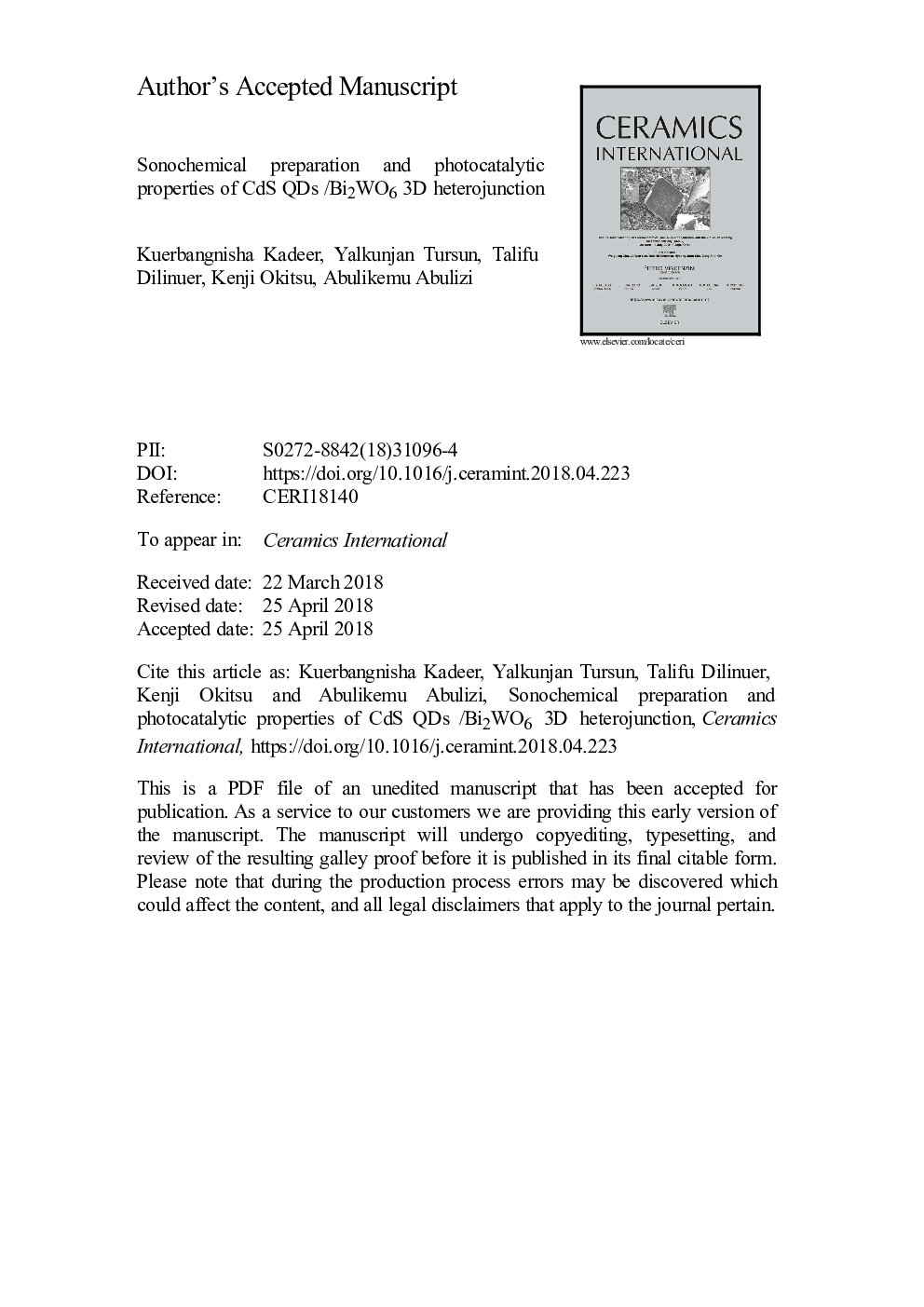| Article ID | Journal | Published Year | Pages | File Type |
|---|---|---|---|---|
| 7886477 | Ceramics International | 2018 | 38 Pages |
Abstract
Hierarchical CdS quantum dots (QDs)/ Bi2WO6 three-dimensional (3D) heterojunction photocatalyst was successfully synthesized by a facile green ultrasonic method for the first time. Photocatalytic activities under visible light irradiation were tested by the degradation of Rhodamine B (RhB) and tetracycline hydrochloride (TC), and the reduction of Cr(VI) in aqueous solution. As compared to pure CdS and Bi2WO6, CdS QDs/ Bi2WO6 heterojunctions manifested a significantly enhanced photocatalytic activity for these treatments. When the effect of the mass ratio of CdS QDs to Bi2WO6 was investigated, 3% CdS QDs/ Bi2WO6 heterojunction showed the highest photocatalytic efficiency: the efficiency for RhB degradation was 94.5% for 30â¯min and this value was about 6 times and 1.5 times higher than those of pure Bi2WO6 and CdS QDs. This enhancement was majorly accredited to the synergetic effect between Bi2WO6 and CdS QDs, which included intimate contact and matched band gap potentials between 0D CdS QDs and 3D Bi2WO6, which contributed to the efficient electron-hole separation and fast transfer of charge carriers between CdS QDs and Bi2WO6. A possible Z-scheme photocatalytic mechanism was proposed, in which the sample was provided with the efficient charge transfer pathway and was endowed with excellent oxidation and reduction ability.
Related Topics
Physical Sciences and Engineering
Materials Science
Ceramics and Composites
Authors
Kuerbangnisha Kadeer, Yalkunjan Tursun, Talifu Dilinuer, Kenji Okitsu, Abulikemu Abulizi,
